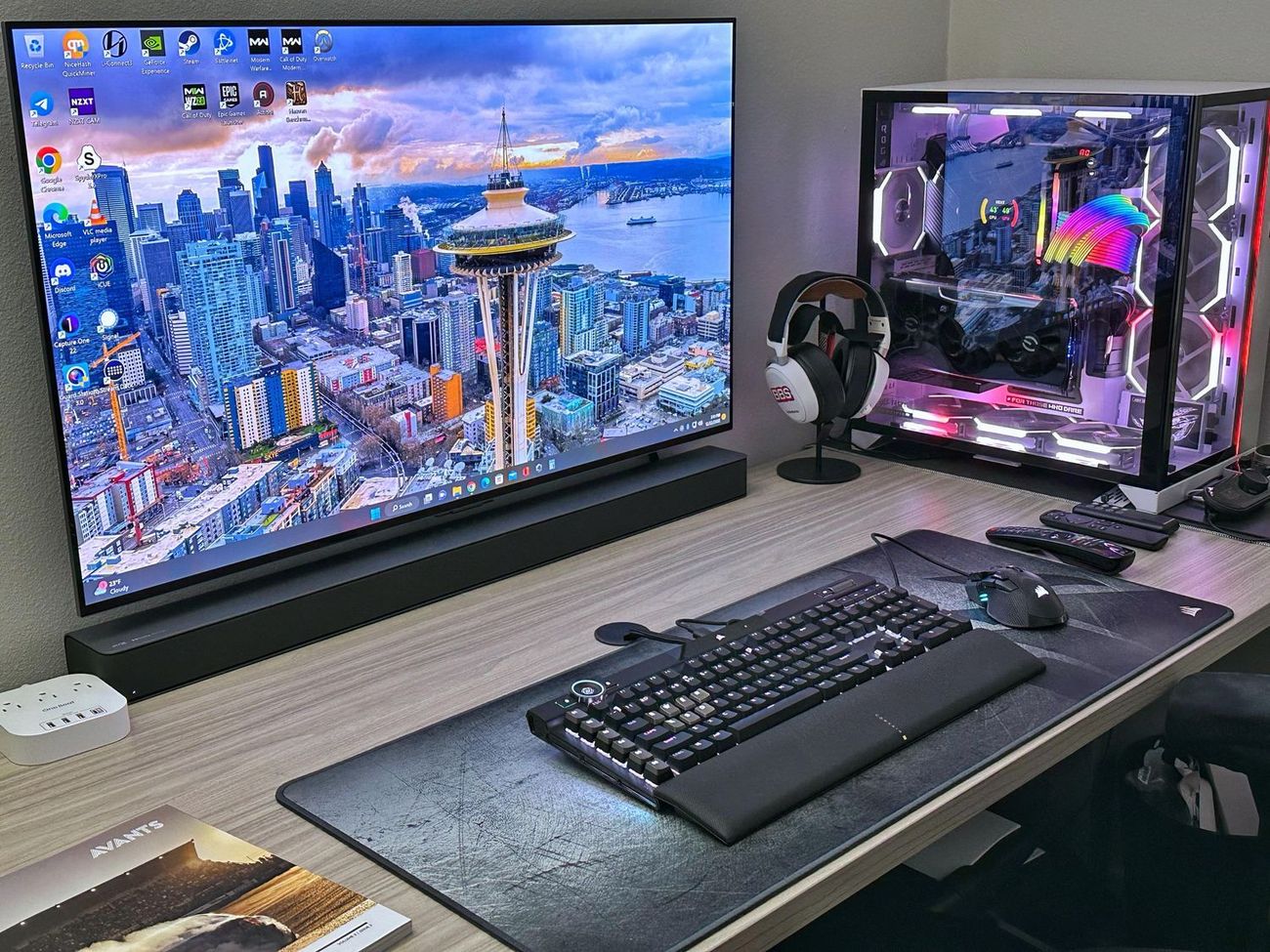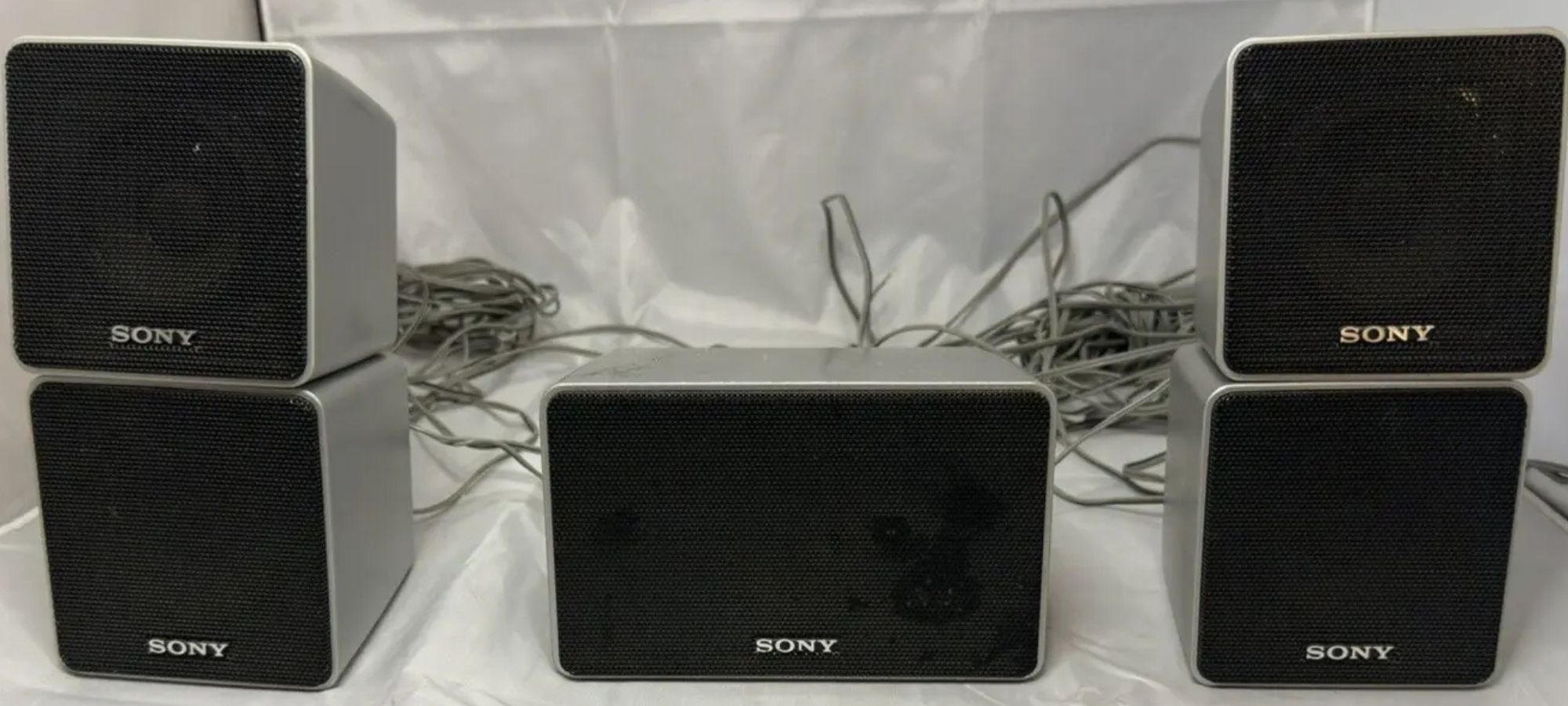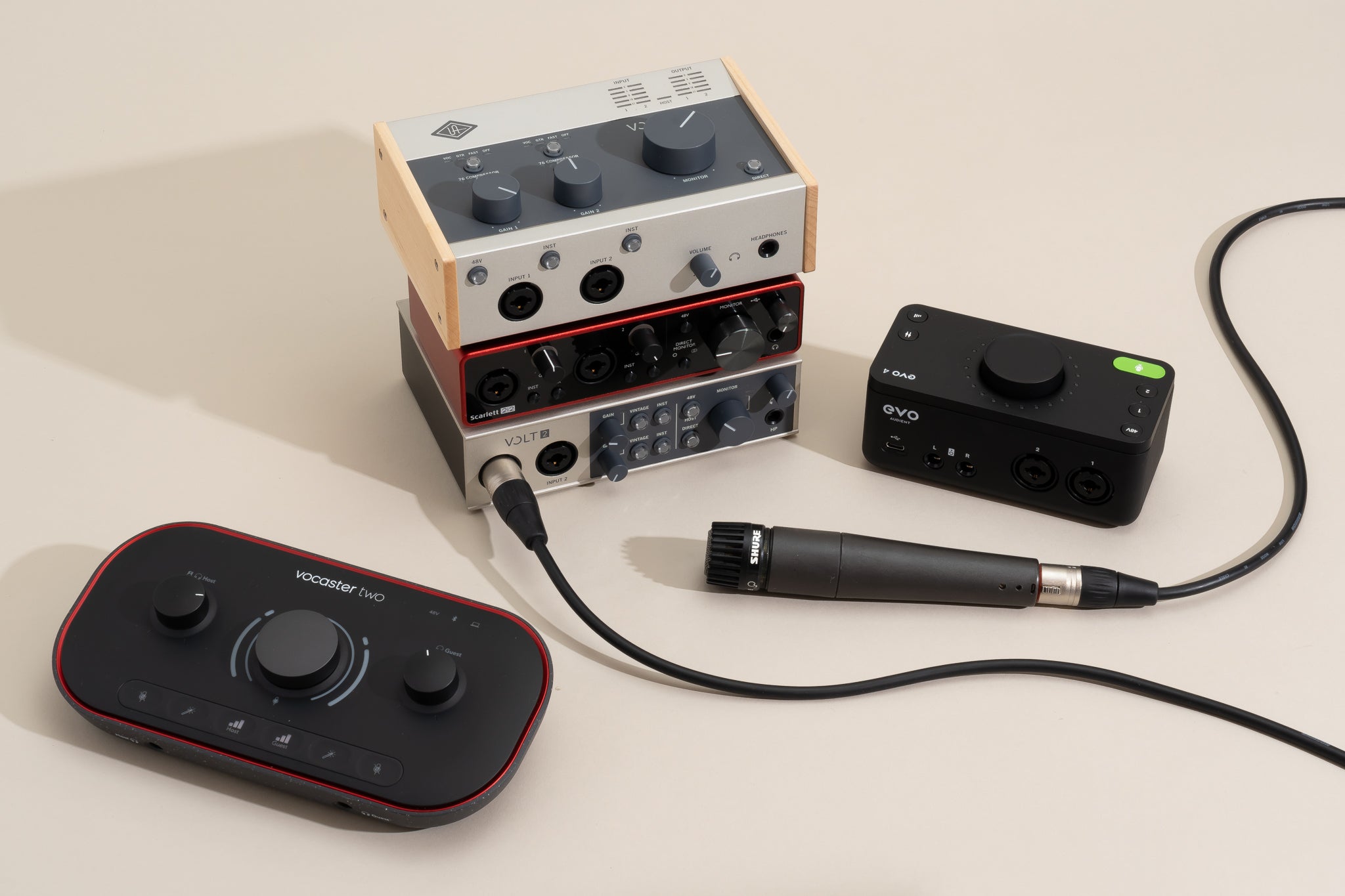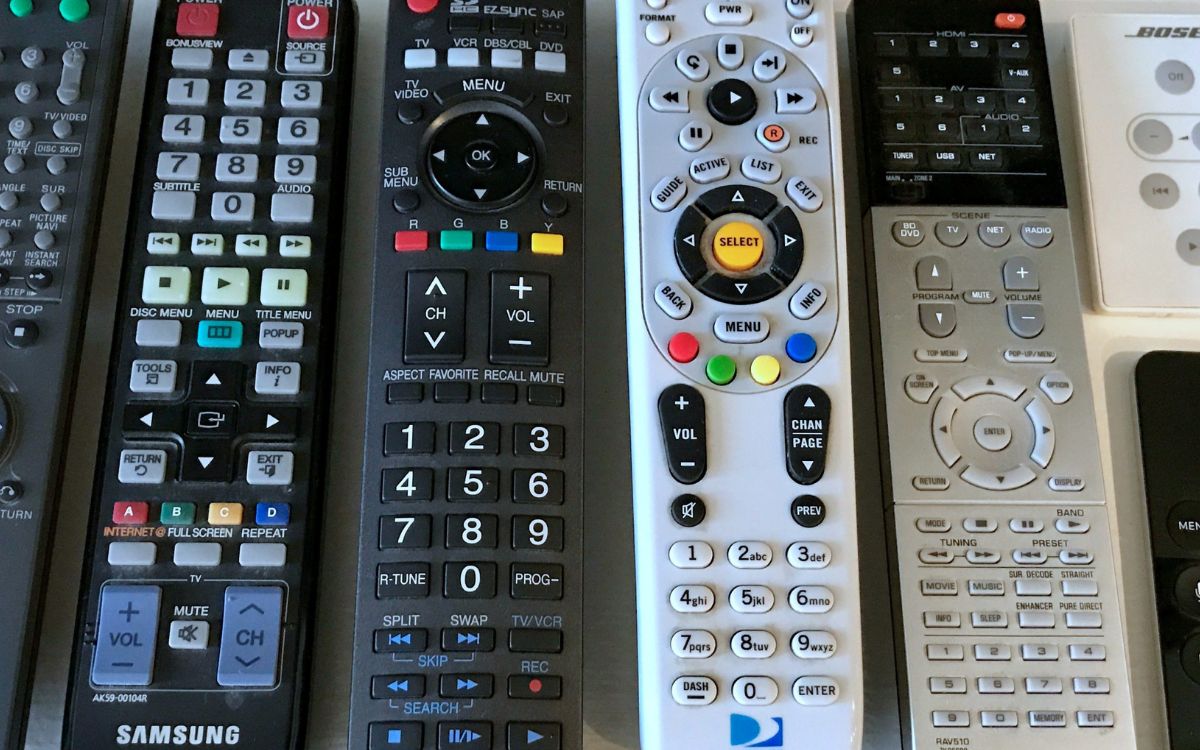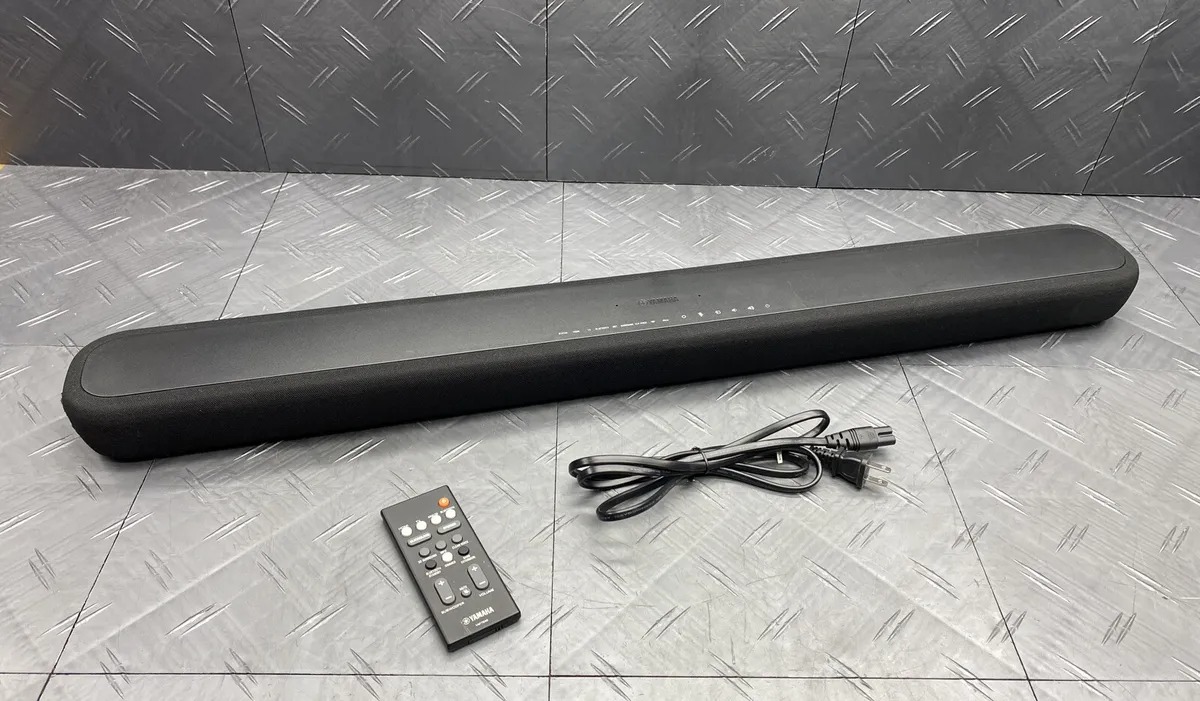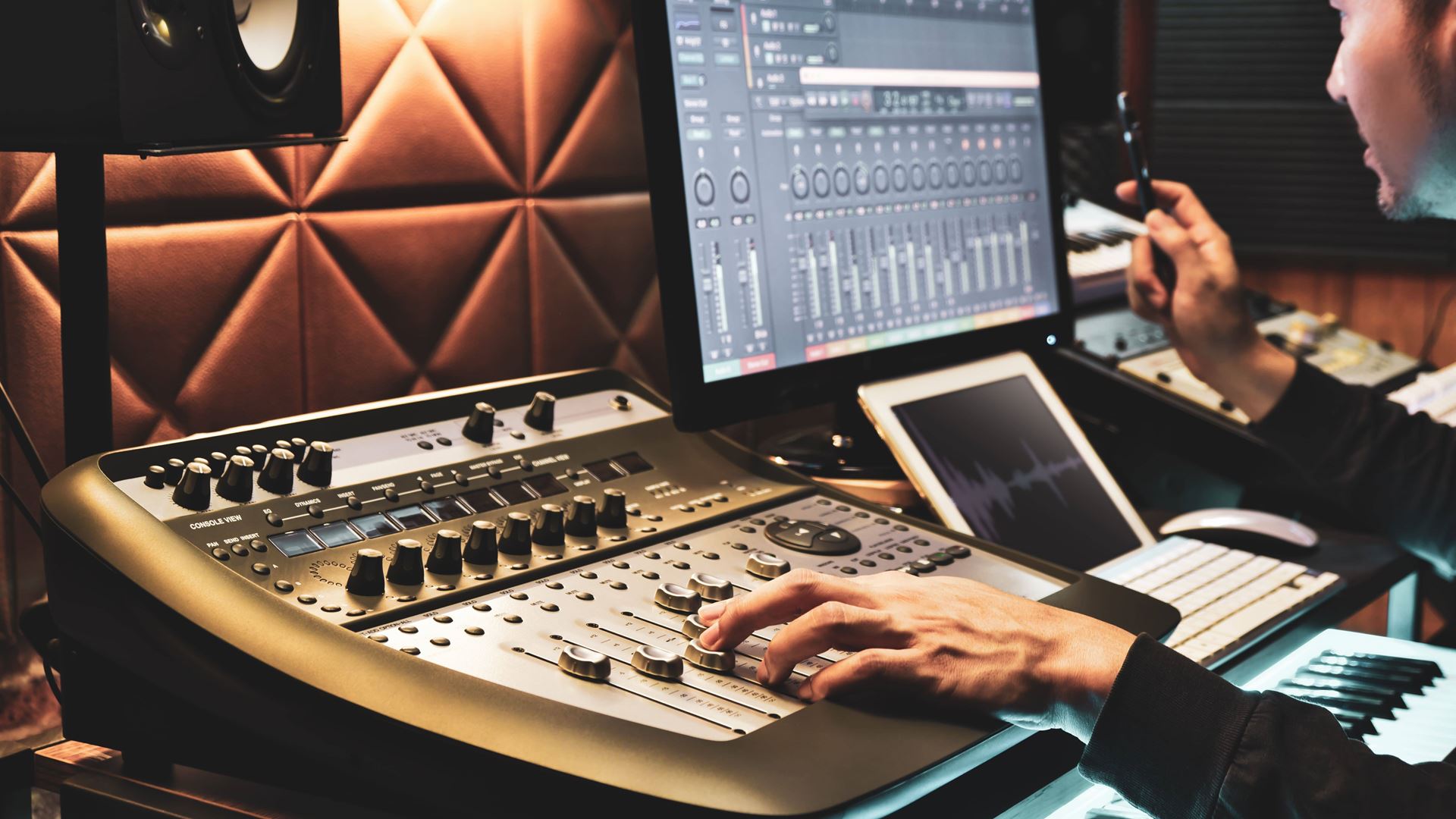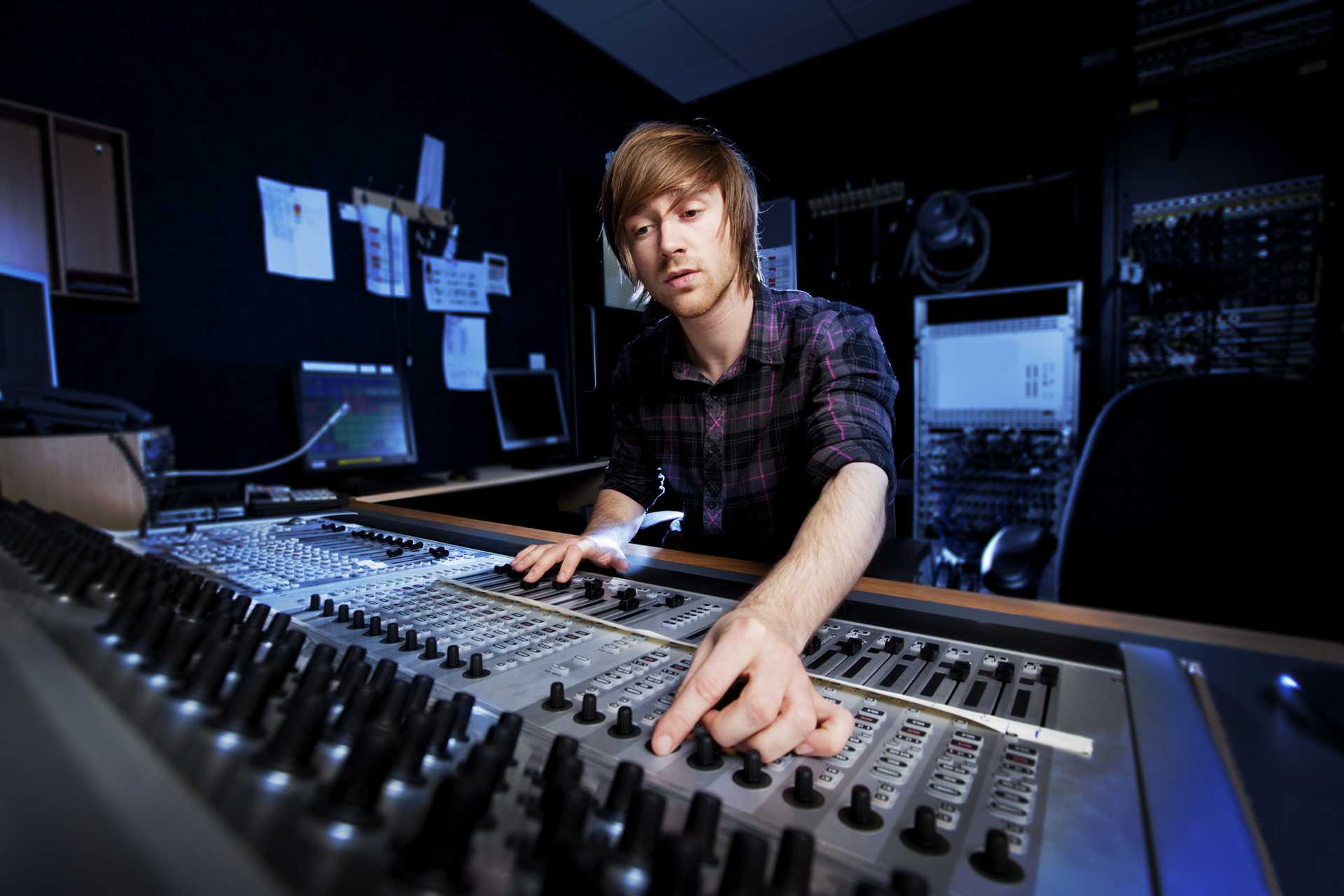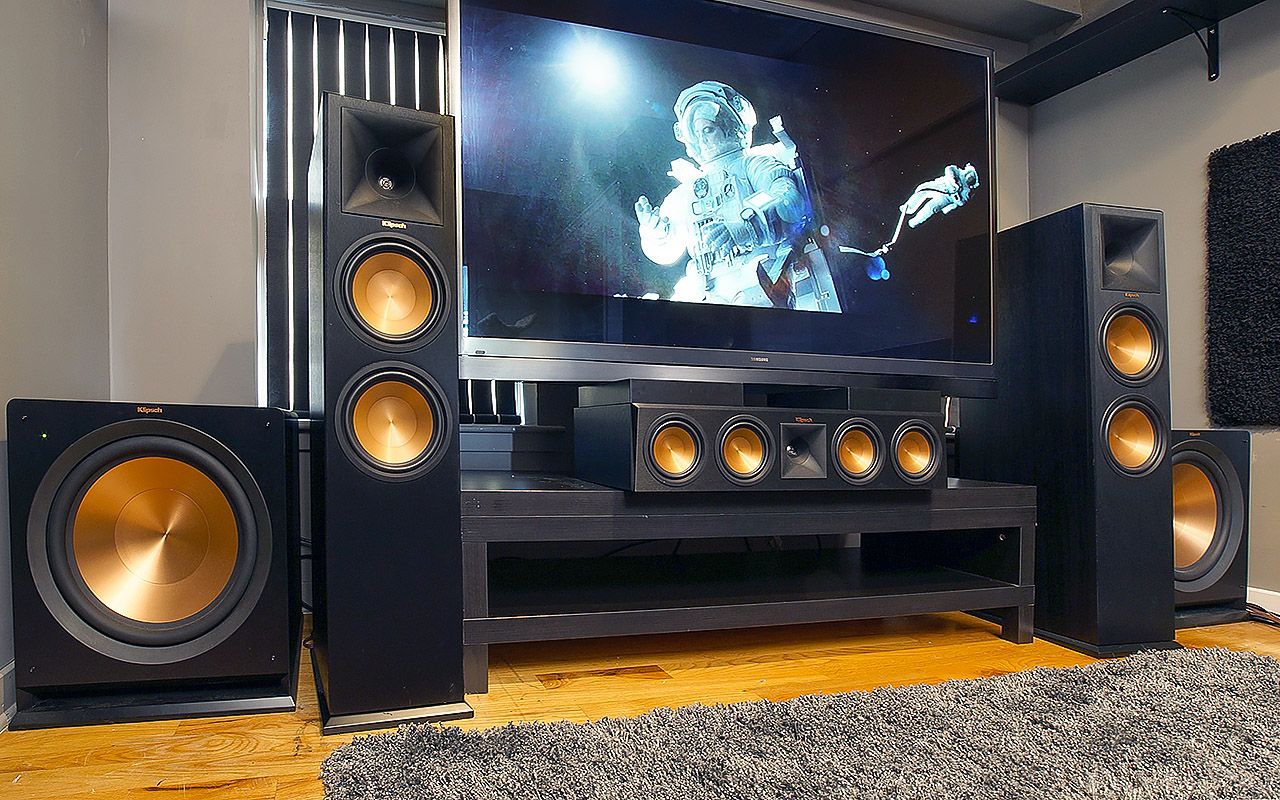Home>Production & Technology>Sound Engineer>How Is A Sound Engineer’s Room Set Up
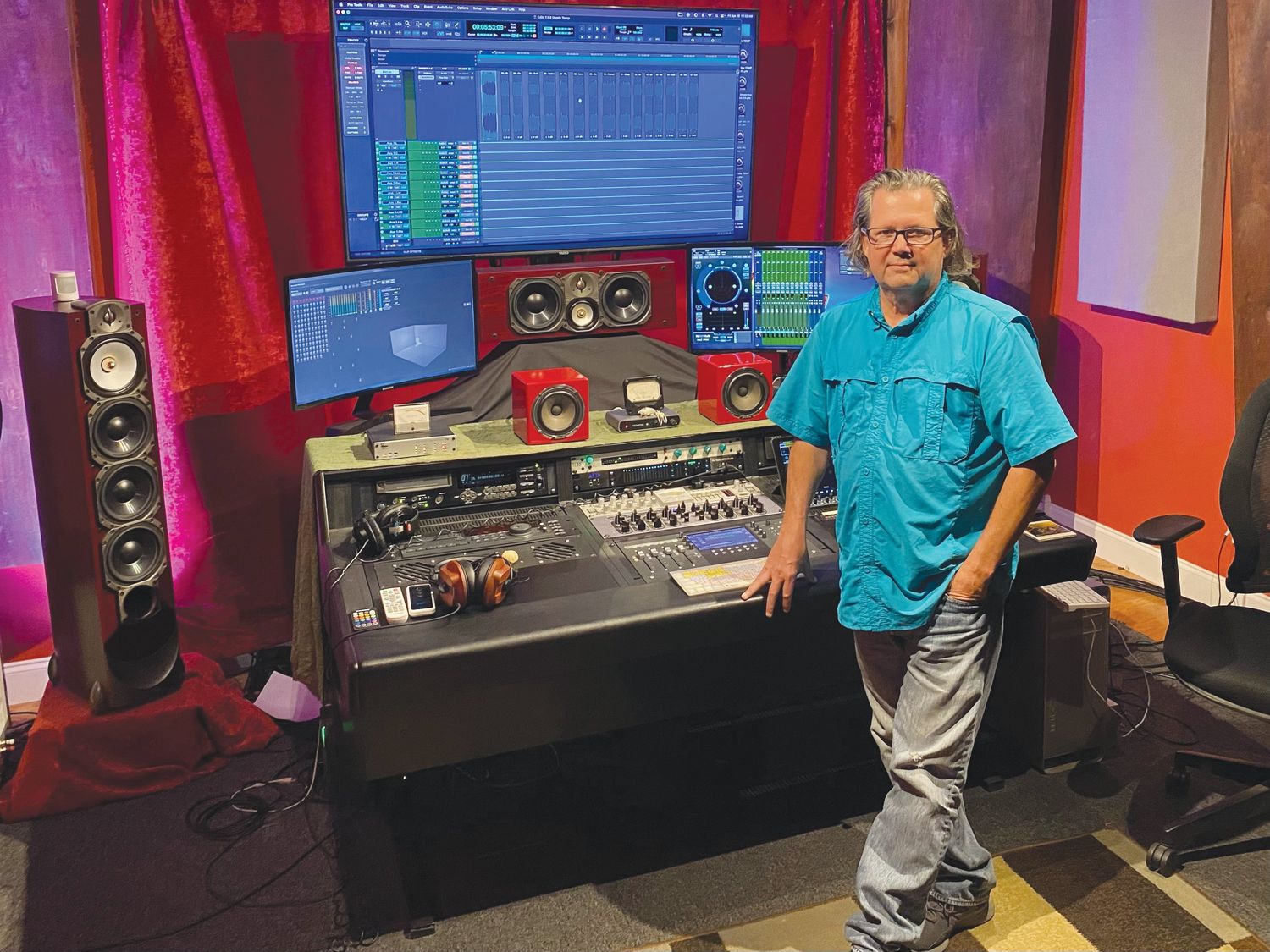

Sound Engineer
How Is A Sound Engineer’s Room Set Up
Published: March 7, 2024
Discover the essential elements of a sound engineer's room setup and optimize your space for top-notch audio production. Learn how to create the perfect environment for sound engineering.
(Many of the links in this article redirect to a specific reviewed product. Your purchase of these products through affiliate links helps to generate commission for AudioLover.com, at no extra cost. Learn more)
Table of Contents
Introduction
The role of a sound engineer is crucial in the music and audio production industry. A sound engineer's room, often referred to as a control room, serves as the nerve center for all audio operations. It is meticulously designed and equipped to facilitate the recording, mixing, and mastering of sound with precision and accuracy. The setup of this room plays a pivotal role in ensuring that the engineer can effectively manipulate and enhance audio signals to achieve the desired sonic quality.
The sound engineer's room is not just a physical space; it is a carefully crafted environment that integrates technology, acoustics, and ergonomic design to optimize the audio production process. Every aspect of the room, from its layout to the placement of equipment, is meticulously planned to create an ideal working environment for the sound engineer.
In this article, we will delve into the intricacies of how a sound engineer's room is set up. We will explore the room layout, acoustic treatment, equipment placement, monitoring system, signal flow, and the ergonomic considerations that contribute to the functionality and efficiency of the space. By understanding the fundamental elements of a sound engineer's room setup, one can gain insight into the meticulous craftsmanship and technical expertise that underpin the art of audio engineering.
The next sections will provide a comprehensive overview of the various components and considerations involved in creating an optimal working environment for sound engineers. From the acoustic treatment that shapes the sonic characteristics of the room to the strategic placement of equipment and the ergonomic design principles that prioritize the engineer's comfort and workflow, each aspect contributes to the seamless operation of the sound engineer's room. Let's embark on a journey to unravel the intricacies of this specialized space and gain a deeper appreciation for the art and science of sound engineering.
Room Layout
The layout of a sound engineer's room is meticulously designed to optimize functionality, workflow, and sonic precision. The positioning of key elements within the room plays a pivotal role in creating an environment conducive to effective audio production. The layout typically revolves around the central workstation, where the sound engineer operates and manipulates audio signals. This workstation is strategically positioned to provide an unobstructed view of the entire room, allowing the engineer to monitor and control various aspects of the audio production process.
In addition to the central workstation, the room layout encompasses designated areas for equipment racks, storage, and seating. These elements are arranged to ensure easy accessibility and efficient utilization of space. The placement of equipment racks is carefully considered to facilitate convenient access to audio processors, interfaces, and other essential gear. Moreover, storage areas for cables, microphones, and other accessories are strategically positioned to maintain an organized and clutter-free environment, promoting a seamless workflow.
Furthermore, the seating arrangement in the sound engineer's room is designed to prioritize comfort and functionality. The engineer's chair is positioned ergonomically to minimize fatigue during long hours of audio production. Additionally, guest seating may be incorporated into the layout to accommodate clients or collaborators, fostering a collaborative and inclusive atmosphere within the space.
The room layout also takes into account the positioning of acoustic treatment elements, such as diffusers, bass traps, and acoustic panels. These elements are strategically placed to optimize the room's acoustics, ensuring balanced sound diffusion and absorption. By strategically positioning acoustic treatment elements, the room layout contributes to the creation of an acoustically controlled environment that minimizes unwanted reflections and resonances, thereby enhancing the accuracy of audio monitoring and mixing.
In essence, the room layout of a sound engineer's space is a carefully orchestrated arrangement that harmonizes functionality, ergonomics, and acoustics. It serves as the foundational framework upon which the entire audio production process unfolds, providing the sound engineer with a conducive environment to harness creativity and technical expertise. The thoughtful placement of key elements within the room layout reflects the meticulous attention to detail that defines the art and science of sound engineering.
Acoustic Treatment
Acoustic treatment is a critical component of a sound engineer's room setup, playing a pivotal role in shaping the sonic characteristics of the space. The primary objective of acoustic treatment is to create an acoustically controlled environment that minimizes unwanted reflections, resonances, and frequency anomalies, thereby enhancing the accuracy of audio monitoring and mixing.
The strategic placement of acoustic treatment elements, such as diffusers, bass traps, and acoustic panels, is essential in achieving a balanced and controlled acoustic environment. Diffusers are designed to scatter sound reflections, promoting a sense of spaciousness and envelopment in the room while minimizing the buildup of standing waves. Bass traps, on the other hand, target low-frequency resonances, effectively attenuating bass buildup and enhancing the overall clarity of the room's low-end response. Additionally, acoustic panels are strategically positioned to absorb mid and high-frequency reflections, contributing to a more balanced and controlled sonic environment.
The selection and placement of acoustic treatment elements are tailored to the specific acoustic characteristics of the room, taking into account factors such as room dimensions, construction materials, and the intended usage of the space. By strategically integrating acoustic treatment elements into the room, sound engineers can mitigate the adverse effects of room modes, flutter echoes, and other acoustic anomalies, thereby fostering an environment conducive to critical listening and precise audio manipulation.
Furthermore, the acoustic treatment not only serves to optimize the room's sonic properties but also contributes to the overall aesthetic and ambiance of the space. Acoustic panels, available in various colors and designs, can be utilized to enhance the visual appeal of the room while simultaneously improving its acoustic performance. This dual functionality underscores the versatility and multifaceted nature of acoustic treatment, transcending its technical role to encompass an artistic and design-oriented dimension.
In essence, acoustic treatment is a fundamental aspect of a sound engineer's room setup, harmonizing technical precision with artistic sensibilities. By strategically integrating diffusers, bass traps, and acoustic panels, sound engineers can create an acoustically controlled environment that fosters accurate audio monitoring, critical listening, and precise sound manipulation. The meticulous orchestration of acoustic treatment elements reflects the dedication to sonic excellence that defines the art and science of sound engineering.
Equipment Placement
The strategic placement of equipment within a sound engineer's room is a pivotal aspect of the overall setup, significantly influencing the functionality, workflow, and sonic precision of the space. The arrangement of audio gear, including consoles, interfaces, outboard processors, and monitoring systems, is meticulously planned to optimize accessibility, signal flow, and ergonomic efficiency.
The central focal point of equipment placement is the console or workstation, where the sound engineer operates and manipulates audio signals. The console is strategically positioned to provide an unobstructed view of the entire room, enabling the engineer to monitor and control various aspects of the audio production process. Additionally, the placement of the console is optimized to facilitate easy access to essential controls and interfaces, ensuring seamless operation during recording, mixing, and mastering tasks.
In addition to the console, equipment racks play a crucial role in the equipment placement strategy. These racks house a myriad of audio processors, preamps, equalizers, and other outboard gear essential to the audio production process. The placement of equipment racks is carefully considered to ensure convenient access and efficient cable management, minimizing clutter and optimizing the workflow within the room.
Furthermore, the positioning of monitoring systems, including studio monitors and headphones, is a key consideration in equipment placement. Studio monitors are strategically positioned to create an accurate and balanced listening environment, taking into account factors such as speaker placement, room acoustics, and the sweet spot for critical listening. Similarly, headphone amplifiers and distribution systems are strategically placed to facilitate seamless communication and monitoring during recording sessions.
Moreover, the placement of microphones, instrument inputs, and patch bays is meticulously orchestrated to optimize signal flow and accessibility. Microphone stands and boom arms are strategically positioned to accommodate various recording setups, ensuring flexibility and adaptability in capturing different sound sources. Additionally, patch bays are strategically located to facilitate easy routing and connectivity between different audio devices, streamlining the signal flow within the room.
The equipment placement within a sound engineer's room is a carefully orchestrated arrangement that harmonizes accessibility, functionality, and signal flow. By strategically positioning consoles, equipment racks, monitoring systems, and connectivity interfaces, sound engineers can create an environment conducive to efficient audio production and precise signal manipulation. The meticulous attention to equipment placement reflects the technical expertise and ergonomic considerations that underpin the art and science of sound engineering.
Monitoring System
The monitoring system within a sound engineer's room is a critical component that significantly influences the accuracy and precision of audio production. It encompasses a range of audio playback devices, including studio monitors, headphones, amplifiers, and speaker placement, all meticulously designed to facilitate critical listening and accurate sound reproduction.
Studio monitors, also known as reference monitors, serve as the primary playback devices within the monitoring system. These speakers are engineered to deliver a flat frequency response, providing an uncolored representation of the audio being produced. The placement of studio monitors is a crucial consideration, as it directly impacts the spatial imaging and tonal balance perceived by the sound engineer. Strategic positioning of the monitors, often following the equilateral triangle setup, ensures an optimal listening environment and minimizes the impact of room acoustics on the sound reproduction.
In addition to studio monitors, the monitoring system includes headphones, which serve as an essential tool for isolated listening and critical evaluation of audio content. High-quality headphones, characterized by accurate frequency response and sound isolation, enable sound engineers to discern minute details and nuances in the audio, making them indispensable for tasks such as precise editing, vocal tuning, and mix referencing.
The monitoring system also encompasses headphone amplifiers and distribution systems, which facilitate seamless communication and monitoring during recording sessions. These systems ensure that performers and sound engineers can monitor audio content with clarity and precision, fostering effective collaboration and communication within the recording environment.
Furthermore, the monitoring system extends to the calibration and optimization of the playback devices to ensure accurate and consistent sound reproduction. This may involve room correction software, acoustic measurement tools, and speaker calibration systems, all aimed at mitigating the impact of room acoustics and achieving a more accurate representation of the audio content.
The meticulous orchestration of the monitoring system reflects the dedication to sonic excellence and precision that defines the art and science of sound engineering. By integrating high-quality studio monitors, headphones, amplifiers, and calibration tools, sound engineers can create an environment conducive to critical listening, precise audio manipulation, and the attainment of sonic perfection.
In essence, the monitoring system is a cornerstone of the sound engineer's room setup, serving as the conduit through which audio content is meticulously evaluated, refined, and perfected. It embodies the commitment to sonic fidelity and technical precision that underpins the art of audio engineering, elevating the sound engineer's room into a realm of sonic excellence and creative possibility.
Signal Flow
Signal flow is the lifeblood of a sound engineer's room, encompassing the intricate path through which audio signals traverse, interact, and undergo manipulation. Understanding and optimizing signal flow is paramount to achieving precise control over audio content, from the initial recording stages to the final mix and mastering processes.
The signal flow within a sound engineer's room typically begins with the capture of audio signals through microphones or direct inputs. These signals are then routed to preamplifiers, where they undergo initial amplification and tonal shaping. The preamplified signals are subsequently channeled to audio interfaces, where analog audio is converted into digital data for processing within the digital audio workstation (DAW).
Once within the digital domain, the audio signals navigate through a complex network of processing modules, including equalizers, compressors, reverbs, delays, and other effects. Each processing stage introduces specific alterations to the audio content, shaping its tonal characteristics, dynamics, and spatial attributes. The strategic arrangement of processing modules within the signal flow is crucial in achieving the desired sonic outcomes and maintaining a balanced mix.
Furthermore, the signal flow encompasses the integration of external hardware processors, such as analog compressors, equalizers, and reverbs, into the digital audio environment. This integration involves routing audio signals from the DAW to the external processors and back, leveraging the unique sonic characteristics and coloration imparted by analog gear to enhance the overall audio quality.
The final stages of the signal flow involve the routing of processed audio signals to the monitoring system, comprising studio monitors and headphones, for critical listening and evaluation. The accuracy and precision of the signal flow directly impact the sound engineer's ability to discern subtle nuances, balance elements within the mix, and achieve sonic coherence.
In essence, the signal flow within a sound engineer's room is a complex and dynamic pathway that governs the trajectory of audio signals from inception to fruition. It embodies the art and science of audio engineering, encapsulating the meticulous orchestration of processing stages, routing configurations, and sonic manipulations that culminate in the creation of captivating and immersive audio experiences. The optimization of signal flow is fundamental to the art of sound engineering, empowering engineers to sculpt and refine audio content with unparalleled precision and artistry.
Ergonomics
Ergonomics plays a pivotal role in the design and setup of a sound engineer's room, prioritizing the comfort, health, and efficiency of the engineer during long hours of audio production. The ergonomic considerations encompass various aspects of the room, including the layout, seating, workstation design, and accessibility of equipment.
The seating arrangement within the sound engineer's room is meticulously designed to minimize physical strain and fatigue. An ergonomically designed chair, featuring adjustable height, lumbar support, and armrests, provides the engineer with a comfortable and supportive seating option. This ergonomic chair promotes proper posture and reduces the risk of musculoskeletal disorders, ensuring that the engineer can focus on the audio production tasks without discomfort or physical strain.
Furthermore, the workstation design is tailored to prioritize ergonomic efficiency. The placement of the console, equipment racks, and monitoring systems is optimized to minimize reaching and twisting movements, promoting a natural and comfortable workflow. The arrangement of controls and interfaces within the workstation is also designed with ergonomics in mind, ensuring that essential functions are easily accessible without excessive reaching or strain.
In addition to seating and workstation design, the accessibility of equipment and tools within the room is a key ergonomic consideration. The strategic placement of equipment racks, storage areas, and cable management systems is aimed at minimizing unnecessary movements and optimizing the engineer's reach for essential gear. This streamlined accessibility not only enhances efficiency but also reduces the risk of repetitive strain injuries associated with prolonged reaching and bending.
Moreover, the integration of adjustable monitor stands, keyboard trays, and monitor arms further contributes to the ergonomic optimization of the engineer's workspace. These adjustable elements allow the engineer to customize the workstation setup to suit individual preferences and physical requirements, promoting a personalized and ergonomic working environment.
By prioritizing ergonomics in the design and setup of the sound engineer's room, the space becomes more than a technical hub; it becomes a sanctuary that nurtures the well-being and productivity of the engineer. The seamless integration of ergonomic principles into the room's layout, seating, workstation design, and equipment accessibility underscores the commitment to creating a conducive and sustainable environment for the art and science of sound engineering.
Conclusion
The meticulous setup of a sound engineer's room is a testament to the artistry and technical precision that underpin the field of audio engineering. Every facet of the room, from its layout and acoustic treatment to the placement of equipment and the optimization of signal flow, reflects a harmonious blend of creativity and scientific expertise. The culmination of these elements creates an environment that empowers sound engineers to sculpt, refine, and elevate audio content with unparalleled precision and artistry.
In conclusion, the sound engineer's room is not merely a physical space; it is a meticulously crafted environment that embodies the dedication to sonic excellence and the pursuit of sonic perfection. The strategic layout of the room, designed to optimize functionality, workflow, and sonic precision, serves as the foundational framework upon which the entire audio production process unfolds. The integration of acoustic treatment elements, such as diffusers, bass traps, and acoustic panels, creates an acoustically controlled environment that fosters accurate audio monitoring, critical listening, and precise sound manipulation.
Furthermore, the strategic placement of equipment, including consoles, interfaces, monitoring systems, and connectivity interfaces, ensures seamless operation and efficient utilization of space. The monitoring system, comprising studio monitors, headphones, amplifiers, and calibration tools, serves as the conduit through which audio content is meticulously evaluated, refined, and perfected. The optimization of signal flow, encompassing the intricate path through which audio signals traverse, interact, and undergo manipulation, empowers sound engineers to sculpt and refine audio content with unparalleled precision and artistry.
Moreover, the integration of ergonomic principles into the room's layout, seating, workstation design, and equipment accessibility nurtures the well-being and productivity of the engineer, fostering a conducive and sustainable environment for the art and science of sound engineering.
In essence, the sound engineer's room is a sanctuary where technical expertise and artistic sensibilities converge, where sonic visions are realized, and where the boundaries of creativity and innovation are continually pushed. It is within this specialized space that the magic of audio engineering unfolds, where sound is transformed, refined, and ultimately transcends into captivating and immersive experiences for audiences worldwide.

